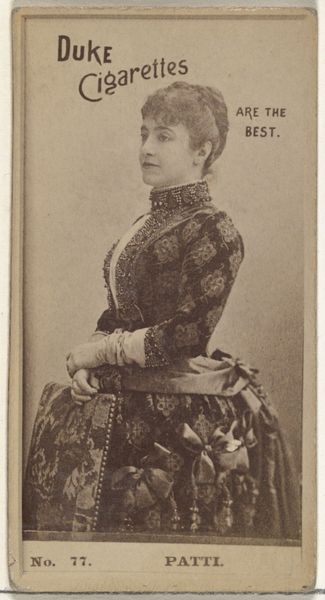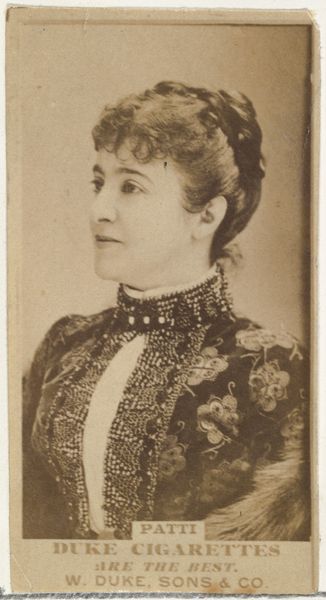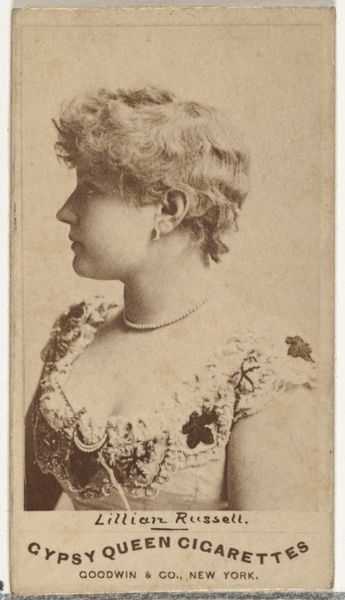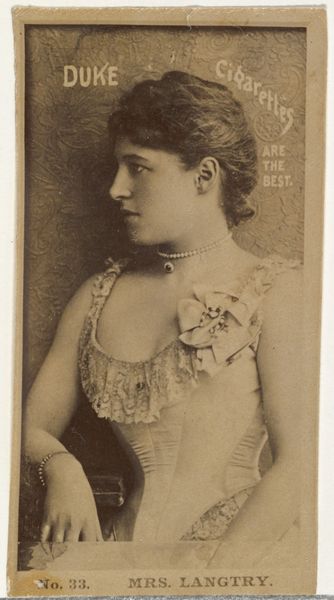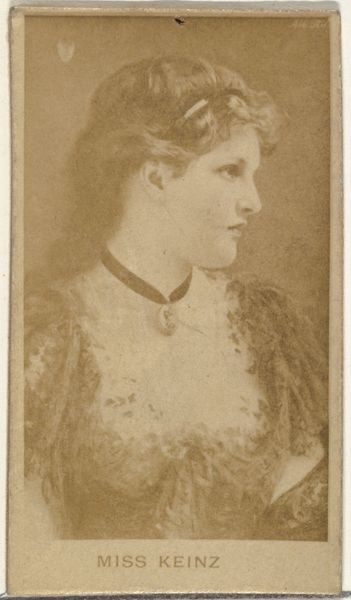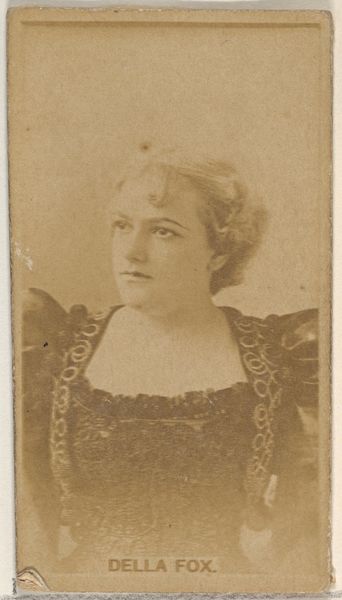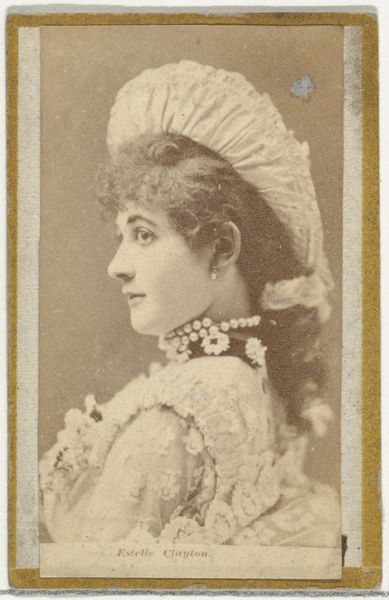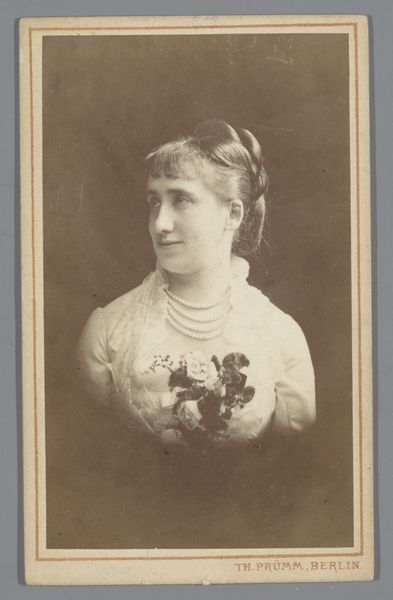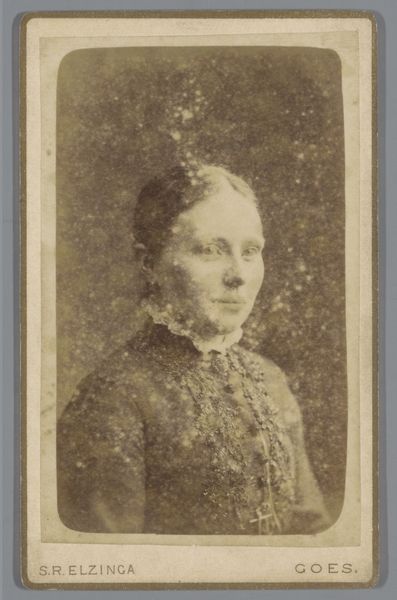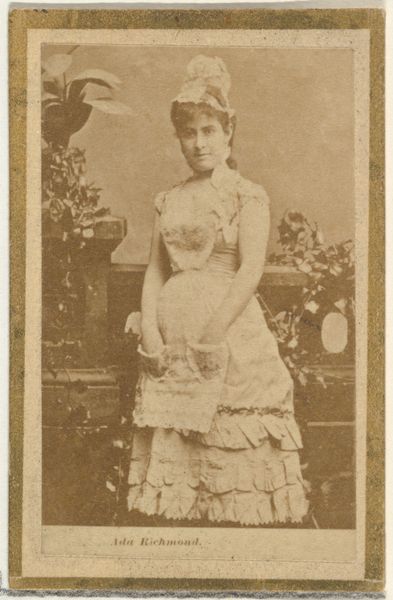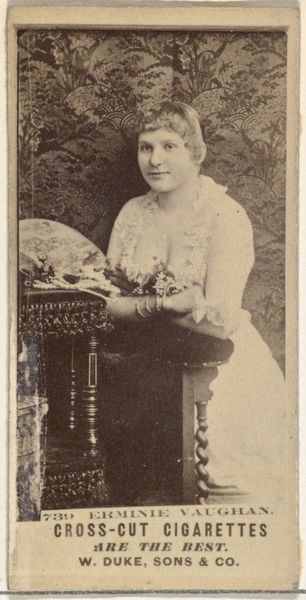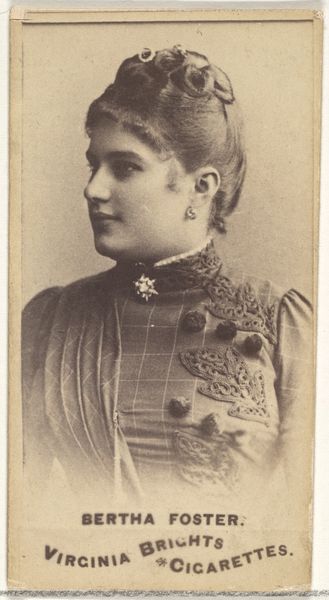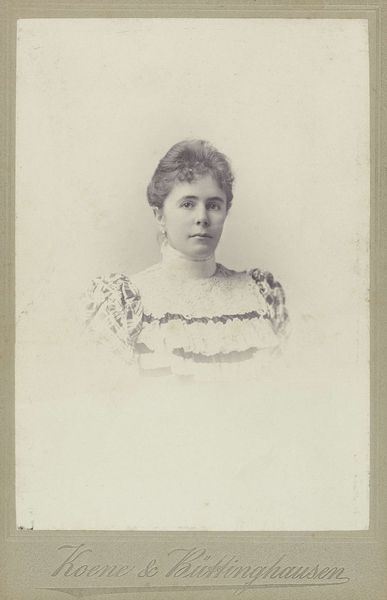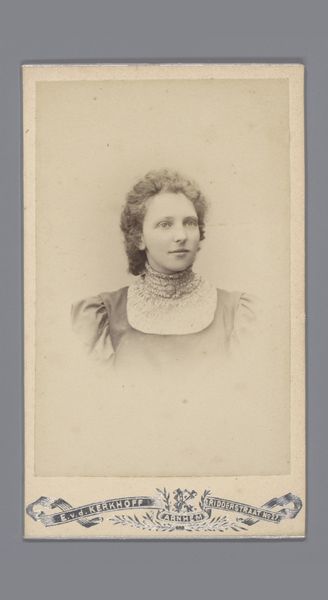
Empress of Brazil, from World's Sovereigns series (N34) for Allen & Ginter Cigarettes 1889
0:00
0:00
drawing, lithograph, print
#
portrait
#
drawing
#
art-nouveau
#
lithograph
# print
#
impressionism
#
oil painting
Dimensions: Sheet: 2 3/4 x 1 1/2 in. (7 x 3.8 cm)
Copyright: Public Domain
Editor: So, here we have "Empress of Brazil," a lithograph print from 1889, part of the World's Sovereigns series by Allen & Ginter Cigarettes. I’m immediately struck by the ornate details framing a somewhat... stern-looking portrait. What's your take on it? Curator: It’s crucial to view this not just as a portrait but as a cultural artifact, intertwined with colonialism and capitalist enterprise. These cigarette cards served to exoticize and categorize global figures for Western consumption. Notice the "Empress of Brazil" label juxtaposed with the advertisement for Richmond cigarettes – it speaks volumes about power dynamics and trade in the late 19th century. What does this supposed celebration of global power structures obscure, in your opinion? Editor: Hmm, it kind of feels like a reduction – taking a complex historical figure and turning her into a collectible, stripping away context. It feels exploitative, especially considering the cigarette industry's own exploitative practices. Curator: Exactly. This image participates in a larger system of representation where non-Western figures are flattened and commodified. Think about who gets to control these images and narratives. The power lies in the hands of the colonizer, defining the colonized. And even the art nouveau flourishes work to ‘prettify’ and normalize the underlying message. What are your thoughts on that ornamental aspect of the card? Editor: I didn't even consider that, but it’s true! The art style almost legitimizes the act of consumption, both of the product and the image itself. Curator: It’s about visual strategies of power and control. Analyzing these images allows us to understand how ideology operates in seemingly innocuous ways, then and now. It really goes beyond the image itself! Editor: I see your point. I initially saw a portrait, but it's so much more – a tool of cultural and economic dominance. Thanks for making me rethink my first impression! Curator: Absolutely. The goal is to see beyond the surface, understand how art reflects and reinforces systems of power, and continuously question whose narratives are being amplified, and at whose expense.
Comments
No comments
Be the first to comment and join the conversation on the ultimate creative platform.
